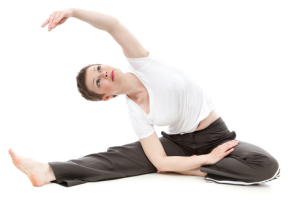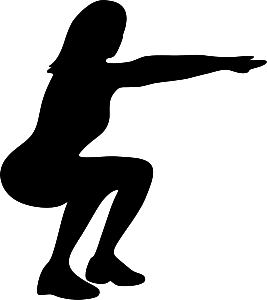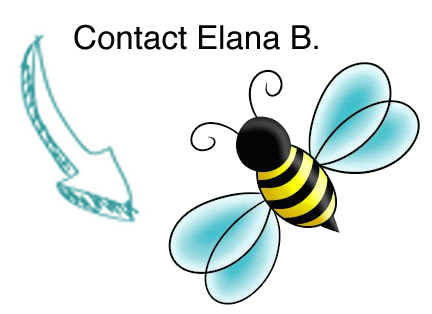Working out to guarantee results
Do you want to see results from your time at the gym or your home workout?
If so, you’ll find that with just 30 minutes of exercise per day, you’ll soon see results. It may sound too good to be true, but it’s all about working out the smart way.
To start your workout, spend a few minutes stretching out the muscles that you’re going to engage. Then, if possible, take a short walk. Typically, walking was not included in your 30 minute workout because the act of physically walking is something that everyone should do, every day.
That being said, if you choose to make walking your primary mode of exercise, you can do so and include weights. In fact, this is commonly called interval training, which can be done on a treadmill with light 2-5 lb weights or as a fast-paced walk. If you would like to incorporate the cardiovascular aspect of a short, fast-paced walk and still do 30 minutes of exercise per day, you can choose that option.
Keep reading for a detailed breakdown of an ideal 30 minute workout!
 The First 5 Minutes
The First 5 Minutes
For starters, you should have already warmed up your legs with a short walk. If not, spend an extra couple minutes stretching your calves and the rest of your body. This step is important because it’ll help you avoid getting cramps.
10 Minutes of Exercise
Do a quick circuit: 6 exercises, 1 to 1 ½ minutes each, with a maximum of 15 seconds of rest between each exercise.
- Bench press (do not use weights that are so heavy that you need a spotter)
- Pull downs
- The pull-down exercise is a strength training exercise designed to develop the latissimus dorsi muscle (meaning broadest muscle of the back)
- Place arms straight out at either side (holding weights or using a weight machine) and bring down to the side of your body
- Squats
- Squats are the prize of your workout and make your body look amazing.
- In strength training and fitness, the squat is a compound, full body exercise that trains primarily the muscles of the thighs, hips and buttocks, quadriceps, hamstrings, as well as strengthening the bones and ligaments
- Squats are considered a vital exercise for developing core strength
 First, here’s how to do a basic body-weight squat:
First, here’s how to do a basic body-weight squat:
Stand as tall as you can with your feet spread shoulder-width apart. Lower your body as far as you can by pushing your hips back and bending your knees. Pause, and then slowly push yourself back to the starting position. Make sure your knees do not come out past your toes.
- Lunges
- Stand with right foot forward, left foot back about 3 feet apart
- Hold weights in each hand and bend the knees to lower the body towards the floor
- Keep the front knee behind the toes and be sure to lower straight down rather than forward
- Keep your torso straight and abs in as you perform this exercise
- Bicep curls
- Hold the dumbbells in your hands and place your elbows against your hip bones, letting your arms slightly hang
- Slowly lift the weight up until your forearm touches your chest
- Slowly move your arm back down in the same motion as lifting
- Leg extensions or curls
- If you don’t have a machine, use a chair and make sure that you sit up straight and keep your body aligned. If you have weights that strap onto your ankles, it will be easier to perform this exercise. Seated and facing forward, chin down/level, extend both legs up until they are stretched out straight in front of you. Hold for a few seconds and then slowly lower to starting position.
Important: Always perform these exercises with proper form. Train in front of a mirror or record yourself on your phone so you can make sure you’re not messing up the form. Finally, remember these tips about the ideal number of repetitions:
- 4 to 6 reps: Use heavier weights to build strength and size
- 12 to 15 reps: Average to light weights for general fitness
- 20 to 25 reps: Fat burning and muscle endurance
5 -10 Minutes of Cardio
While doing cardio, it’s important to go at an even pace at first. Then, after 1-2 minutes (or 5 minutes for beginners) pick up the pace…press yourself for 15 to 20 seconds, or up to 1 minute. If you have access to a treadmill or a track, include these sprint intervals in your workout. This will speed up your metabolism and burn fat long after your workout is finished.
Why? Increasing the intensity of your workouts can elevate your metabolism and accelerate your weight-loss goals. Incorporate cardio burst exercises between your strength-training helps burn fat and improve your overall health.
Need another great reason for 30 minutes of exercise per day? Including high-intensity exercise into your exercise routine decreases your risk for developing chronic diseases such as breast cancer, heart disease, diabetes and depression.
5-10 minutes of core work (10 min cardio/ 5 core – 10 core/ 5 cardio = 30 min workout)
 Ab crunch: Performing an “ab crunch” builds strength in your core/abdomen. Therefore, if you have neck or upper back injuries, performing this exercise can be altered to better suit your physical condition. Below is a list of three ways:
Ab crunch: Performing an “ab crunch” builds strength in your core/abdomen. Therefore, if you have neck or upper back injuries, performing this exercise can be altered to better suit your physical condition. Below is a list of three ways:
- 1st way to do a Standard ab crunch
- Lie on your back with knees up. Feet on ground or you can keep knees elevated as if sitting in a chair.
- Cross your arms over your chest and lift shoulders off the ground using abdominal muscles while exhaling
- Pause for a moment and lower your body back
- It is very important not to lift your entire back off the floor, as this can cause back strain
- When your shoulders are off the ground, pause and hold that position for a full second or more. Do not let your body plop down. Form is important.
- Make sure you keep your eyes focused on the ceiling. Holding your head level is important.
- 2nd way to do a proper ab crunch
- Begin in the same way as before; however, place your arms behind your neck, fingers laced to support your neck.
- Don’t let your elbows come together. Keep them level with your ears. Letting your arms close in around your head encourages your head to tilt forward.
- Exhale and contract your abs as you go up.
- 3rd way to do a proper ab crunch
- Use a machine that holds your neck and arms; however, remember not to use your arms much to lift your body; this defeats the purpose.
- With this choice, you must use your legs to pull in at the same time as your arms push down on the support and keep your eyes faced at the ceiling.
- This type of “ab crunch” is for those with neck injuries which prevent them from performing using a mat on the ground.
- Oblique crunches
- Lie flat on the floor with your lower back pressed to the ground. For this exercise, you will need to put one hand beside your head and the other to the side against the floor
- Make sure your feet are elevated, resting on a flat surface (use a chair & rest your feet on it)
- Now lift the shoulder in which your hand is touching your head.
- Simply elevate your shoulder and body upward, turning slightly, until you touch your knee For example, if you have your right hand beside your head, then you want to elevate your body upwards until your right elbow touches your left knee
- After your knee touches your elbow, lower your body until you have reached the starting position
- Bridge
- Lie on your back, feet flat on the floor, knees bent, hands at your sides. (If you feel any tension in your neck, tuck your towel under your head for support).
- Inhale, then raise your bottom and your lower back off the floor as you exhale
- Hold for one count. Slowly release, but don’t let your bottom touch the floor until you have completed all 12-15 repetitions.
- Focus on squeezing your glutes when you are at the top of each rep.
What are the benefits of 30 minutes of exercise per day?
In just 30 minutes, you can get a great full-body workout to help you get in great shape Do this routine three times a week–doing cardio workouts the other three days for a full 30 minutes and you are sure to lose weight, build muscle, and get fit. (this does include eating a healthy nutritious diet) You can’t eat potato chips and hot dogs all day and see the same results.
Things to consider before starting any exercise whether it’s at the gym, a fitness video or program or home maintenance:
- Have you been told that you have a heart condition and should only participate in physical activity recommended by a doctor?
- Do you feel pain (or discomfort) in your chest when you do physical activity?
- When you are not participating in physical activity do you have pain in your chest?
- While at rest, do you frequently experience fast, irregular heartbeats or very slow beats?
- Do you ever become dizzy and lose your balance, or lose consciousness?
- Have you fallen more than twice in the past year
- Do you have pain in your legs or buttocks when you walk?
- Do you have a bone or joint problem that could worsen as a result of physical activity?
- Do you take blood pressure or heart medications?
- Do you have any cuts or wounds on your feet or body that don’t seem to heal?
- Have you experienced unexplained weight loss in the past six months?
- Have you experienced any sudden weight gain in a short period of time?
- Are you aware of any reason why you should not participate in physical activity?
- Do you have diabetes or any other health related condition or disorder that might be affected by exercise?
If you answered “no” to all of these questions, you can be reasonably sure that you can safely take part in at least a moderate-intensity physical-activity program.
Consult your doctor before using any health treatment, plan, or activity — including vitamins, herbal supplements and natural remedies. Also, let your health care provider know if you have a serious medical condition or are taking any medications. The information presented here is for educational purposes only and is in no way intended as a substitute for medical counseling.
Thanks for reading! For more exercise suggestions, look at our post on Yoga and Health. Also, don’t forget to Become a Member of our mailing list to know when new articles are posted and new books are published!







